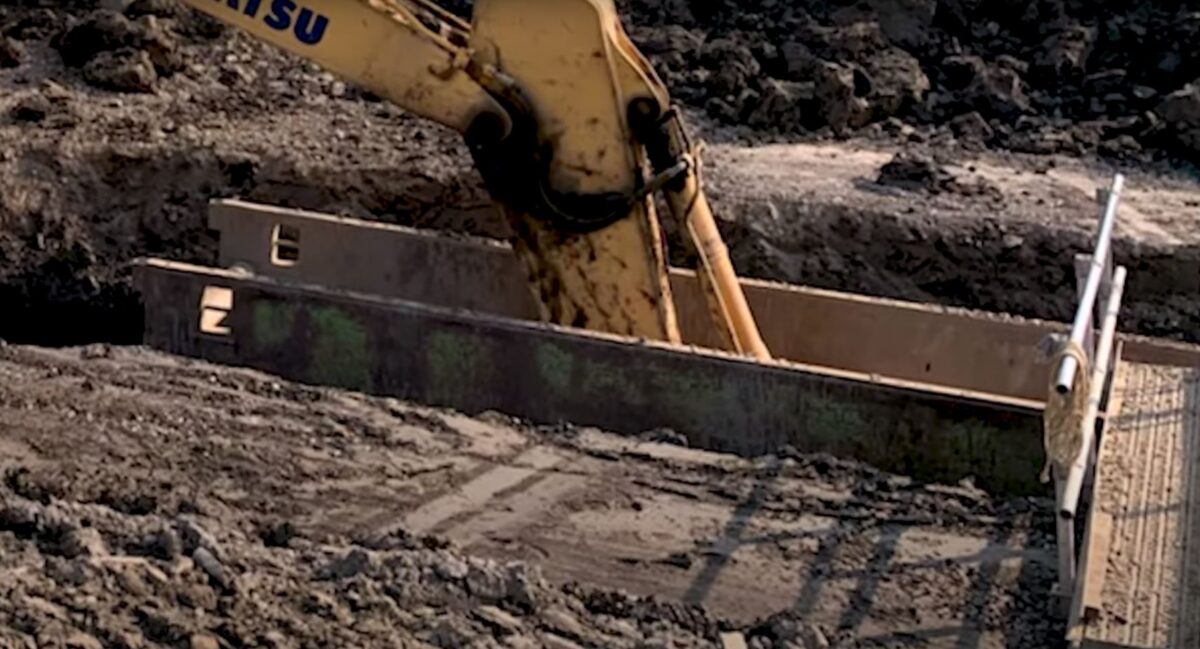Significance of Protective Systems in Trench Excavation
A Deep Dive into Trenching Safety
When embarking on trench excavation projects in Auckland, ensuring safety is paramount. Trenching, a commonly used method, involves digging narrow top openings, sometimes deeper than they are wide. Though projects in Hobsonville may differ slightly from those in Auckland Central due to variations in soil and landscape, the critical importance of protective systems remains consistent.
Risks Involved in Trenching
Trenching, while vital for numerous construction and infrastructural projects, isn’t free from risks:
- Soil Collapse: The weight and inherent instability of some soils can lead to sudden collapses.
- Hazardous Atmospheres: Accumulation of hazardous gases in trenches is common, posing serious respiratory threats.
- Falling Equipment: Without proper barriers, tools or machinery can fall into trenches, endangering workers below.
- Water Accumulation: Water can gather at the trench base, weakening the walls and causing potential drowning hazards.
The Science Behind Trench Protective Systems
At the heart of trench safety is the science of soil mechanics. Auckland’s varying soil types, affected by factors like moisture content, particle size, and compaction, play a pivotal role in determining the best protective system.
Types of Protective Systems: A Closer Look
| System | Specifications | Benefits | Disadvantages |
| Benching | Horizontal steps cut into trench walls | Distributes weight, preventing collapses | Not suitable for all soil types |
| Shoring | Supports such as metal or wood panels | Provides strong wall support | Installation can be time-consuming |
| Shielding | Protective structures placed in the trench | Protects workers from potential collapses | Doesn’t stabilize the trench wall |
| Sloping | Trench walls angled away from excavation | Reduces pressure on trench walls | Requires more space, not ideal for compact areas |
Local Challenges and Considerations
Projects in areas like Auckland Central, with its bustling activity and dense infrastructure, often demand meticulous planning and protective strategies that differ from more open areas like Hobsonville. In these densely populated zones, ensuring minimal disruption to surrounding structures and utilities while maintaining safety is a complex juggling act.
Health and Safety: Not Just an Afterthought
In the realm of trenching, health and safety considerations are paramount:
- Regular Inspections: Ensure trench walls and protective systems are inspected daily by competent individuals.
- Access and Egress: Safeguard that ladders, steps, or ramps are available for workers to enter and exit safely.
- Emergency Protocols: Establish clear procedures in case of collapses or the detection of hazardous gases.
Why Engage Earthmoving Auckland?
The art and science of trenching demand expertise. Earthmoving Auckland brings to the table unparalleled knowledge of local soil conditions, challenges, and the technical know-how to implement effective protective systems. Leveraging modern techniques, our team ensures projects are executed safely, efficiently, and in line with all regulatory standards.
When Rules Might Not Apply
Though protective systems are crucial, some minor trenches, depending on depth and duration, might not demand extensive protective measures. However, it’s vital to consult with experts before making any decisions.
Final Thoughts on Trench Protective Systems
Understanding the significance of protective systems in trenching isn’t just about knowing the techniques. It’s about grasping the science behind it, the local challenges, and the paramount importance of safety. As the Auckland landscape continues to evolve, ensuring these systems are in place becomes even more vital.
Frequently Asked Questions about Trench Protective Systems
What is the primary purpose of a trench protective system?
The main objective of trench protective system is to safeguard workers from potential hazards, primarily trench wall collapses, while performing excavation activities.
Are all protective systems suitable for every trenching project?
No, the appropriate system depends on factors like soil type, trench depth, and environmental conditions.
How is the type of soil crucial in choosing a protective system?
Different soil types have varying levels of stability. A protective system suited for clay might not work as effectively for sandy soil.
Can trenching projects proceed without any protective measures?
For minor trenches of limited depth and duration, extensive protective measures may not be necessary. However, ensuring safety is always paramount.
How often should trench protective systems be inspected?
Ideally, these systems should undergo daily checks and after any event that could alter the trench’s conditions, such as a rainfall.
Are there regulations governing trenching and the use of protective systems?
Yes, local and national safety regulations set standards for trenching activities to ensure worker safety and project integrity.
What’s the difference between shoring and shielding?
Shoring uses supports to prevent trench walls from caving in, while shielding involves placing protective structures inside the trench to guard workers from potential collapses.
How deep does a trench need to be to require a protective system?
Though it can vary based on regulations and soil conditions, generally, trenches deeper than 1.5 meters should have protective systems in place.
What are the potential hazards of water accumulation in trenches?
Water can weaken trench walls, increasing the risk of collapses. It can also lead to potential drowning hazards for workers.
How does trench width impact the choice of protective system?
Trench width affects the amount of pressure exerted on its walls. Narrower trenches may require different protective measures than wider ones to effectively distribute this pressure.
Is benching suitable for all types of soil?
No, benching is often best suited for more stable soil types. In loose or granular soils, other protective measures might be more effective.
What role do atmospheric hazards play in trench safety?
Trenches can accumulate hazardous gases, posing respiratory threats. Proper ventilation and monitoring are essential to mitigate these risks.
In the event of a trench collapse, what immediate actions should be taken?
Immediately evacuate the area, and call emergency services. Attempting a rescue without proper training can exacerbate the situation.
Why choose Earthmoving Auckland for trenching projects?
Earthmoving Auckland boasts extensive expertise in local soil conditions, safety regulations, and effective protective system implementations, ensuring projects are conducted with utmost safety and efficiency.

